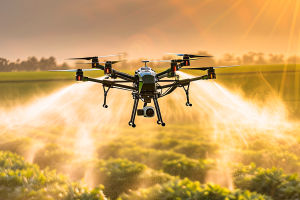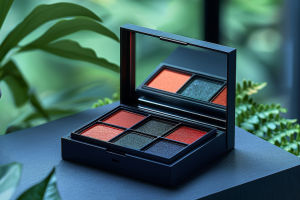Carnivorous Plant Secrets
It sounds strange, right? Plants are usually peaceful, just sitting there, soaking up sunlight. But some plants are actually hunters.
Today, let's dive into the fascinating world of carnivorous plants—yes, plants that eat insects and other small creatures! So, Lykkers, have you ever wondered how a plant can catch its own food? Let's break it down together.
What exactly is a carnivorous plant?
A carnivorous plant is a plant that gets some of its nutrients by trapping and digesting animals, mostly insects. These plants usually grow in areas where the soil is poor in nutrients, especially nitrogen. So instead of depending only on the soil, they find their own way to survive—by eating.
There are more than 600 known species of carnivorous plants, and each one has its own special method of hunting. What's really cool is that these plants still do regular plant things—like photosynthesis—but they also have a little extra on the side: catching dinner.
Different types of plant traps
Carnivorous plants have developed very clever trapping styles. Here are some of the most common ones we might come across:
1. Snap traps – like the Venus Flytrap
This is the one most of us know. When an insect touches the tiny trigger hairs inside the trap, it snaps shut in less than a second! Once the prey is trapped, the plant releases digestive juices to break it down and absorb the nutrients.
2. Pitcher traps – like the pitcher plant
These plants have deep, slippery cups filled with liquid. The inside is slick and often sweet-smelling, attracting insects. When the insect slips in, it can't climb back out and eventually drowns. The plant then digests it slowly. Fun Fact: Some insects, like the pitcher plant mosquito, actually live inside the pitcher without being digested!
3. Sticky traps – like sundews
These plants have sticky hair-like glands on their leaves. Insects land on them, get stuck, and then the plant slowly rolls its leaf around the prey and digests it. Some sundews can bend their tentacles within seconds to maximize contact.
4. Suction traps – like bladderworts
This is a more underwater approach. These plants use tiny, vacuum-powered bladders to draw in small organisms. It happens in milliseconds—the fastest plant movement known.
Why do they eat insects?
Most carnivorous plants live in tough environments—bogs, swamps, and sandy places—where the soil lacks key nutrients. Nitrogen, especially, is hard to come by. Insects are full of nitrogen, so by digesting bugs, the plants are supplementing what the soil can't offer.
It's kind of like how we might take vitamin supplements when our diet is missing something important—except these plants get theirs by catching flies.
How do they digest food?
After trapping an insect, the plant releases special enzymes, similar to the ones in our stomachs. These break down the soft tissues of the insect into usable nutrients. The digestion process can take days, depending on the size of the prey and the type of plant. Once the plant has absorbed all it can, it either reopens (like the Venus Flytrap) or simply lets the leftover bits drop away.
Are they dangerous to humans?
Not at all! While they may sound like mini monsters, carnivorous plants pose zero threat to people. Their traps are designed for tiny insects, not big creatures like us. In fact, they're often grown as houseplants, especially the Venus Flytrap, because they help control bugs and look super cool.
How can we grow one?
If you're thinking about bringing one home, here's a quick tip: most carnivorous plants need moist, acidic soil and lots of sunlight. They don't like tap water because of the minerals, so rainwater or distilled water works best. And don't feed them with meat—they only want insects!
Let's recap the wonder
To sum it up, carnivorous plants are one of nature's coolest survival stories. They adapt to poor soil by turning into hunters, using traps that are sticky, snappy, or slippery. They digest bugs to get the nutrients they're missing—and they do all this without ever moving from one spot.
Isn't that amazing, Lykkers? Would you consider keeping a little green predator at home? Or maybe you've already got one on your windowsill? Tell us what you think—do you find them fascinating or freaky? Let's chat!
-
 Farming Meets TechnologyFarmers Are Transforming Fields With This Surprising Tech Revolution—See How It's Changing Lives!
Farming Meets TechnologyFarmers Are Transforming Fields With This Surprising Tech Revolution—See How It's Changing Lives! -
 Circadian Rhythm ImpactCould Your Internal Clock Be Wrecking Metabolism? Find Out What Science Says!
Circadian Rhythm ImpactCould Your Internal Clock Be Wrecking Metabolism? Find Out What Science Says! -
 Eyeshadow Color GuideHow Can We Choose The Best Eyeshadow Colors For Warm Undertones? Brighten Your Eyes Without Looking Muddy!
Eyeshadow Color GuideHow Can We Choose The Best Eyeshadow Colors For Warm Undertones? Brighten Your Eyes Without Looking Muddy!
Copyright © zogu 2021 - 2025. All Right Reserved.